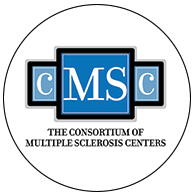2-year data positive in extension study, but no control group
An extension of the phase II BOLD study found sustained reductions in gadolinium-enhancing T1 and new or enlarging T2 lesions over 2 years with siponimod in patients with relapsing-remitting multiple sclerosis (RRMS), researchers reported.
The data also showed sustained reductions in combined unique active lesions (CUALs) when counting Gd-enhancing T1 lesions and new or enlarging T2 lesions together — but only for two of the five doses used in the study, Ludwig Kappos, MD, of University Hospital in Basel, Switzerland, and colleagues reported online in JAMA Neurology.
The investigational treatment was well tolerated and there were no new safety signals, the researchers added.
Siponimod is an oral, once-daily selective sphingosine 1-phosphate receptor modulator, which is thought to be more selective than its cousin agent, fingolimod (Gilenya), which is approved to treat RRMS.
Siponimod targets only the 1 and 5 receptor subtypes, compared with the 1, 3, 4, and 5 subtypes engaged by fingolimod.
To assess the more selective drug, Kappos and colleagues conducted the randomized, double-blind, placebo-controlled phase II BOLD study in 252 RRMS patients from 73 MS centers around the world, with participants randomized to receive placebo or one of five different doses of the drug.
Siponimod was found to reduce CUALs by up to 80% compared with placebo at 6 months, with a dose-response relationship.
The team then conducted a 2-year extension study, in which 184 of the original participants enrolled, with 159 completing the full 2 years. Patients in the original placebo groups were randomized to receive the active drug at one of the five dosage levels.
The reduction in MRI activity seen in the initial 6 months of the trial was sustained for several doses of the drug. The proportion of patients free from CUALs was higher in the 2-mg and 1.25-mg doses than in the 10-mg, 0.5-mg, and 0.25-mg doses (57.7% and 58.1% versus 43.8%, 31%, and 47.9%)
There were, however, sustained improvements on each measure alone, with declines in gadolinium-enhancing T1 lesions lasting 2 years for patients on the four highest dosage levels (10 mg, 2 mg, 1.25 mg, and 0.5 mg) and numerically fewer new or enlarging T2 lesions for those on the three highest doses (10 mg, 2 mg, 1.25 mg).
Although the study was not powered for this endpoint, the annualized relapse rate was low at all siponimod doses through the end of the 2-year extension, with significantly fewer relapses for those on the 10-mg, 2-mg, and 1.25-mg doses compared with the 0.5-mg and 0.25-mg doses, the researchers reported.
In terms of safety, the overall incidence of adverse events ranged from 84% to 97% and was generally similar across groups, with the most common side effects being nasopharyngitis, headache, lymphopenia, upper respiratory infection, increased alanine aminotransferase, pharyngitis, and insomnia. The incidence of lymphopenia and decreased lymphocyte count was highest in the 10-mg group.
There were no cases of macular edema, no severe or systemic opportunistic infections, and the rates of serious adverse events were low (reported in nine patients).
Dose titration effectively reduced the negative chronotropic effect of siponimod seen at higher doses in the BOLD study, Kappos and colleagues wrote, and only 5% of patients needed extended cardiac monitoring
Reductions in heart rate were most pronounced at the two higher doses of 2 mg and 10 mg, the researchers said.
Two patients had transient second-degree atrioventricular block (AVB) on 24-hour Holter monitoring. One patient (3%) had a first-degree AVB at 12 months, and another (3%) had Mobitz I second-degree AVB during screening phases of the BOLD and extension studies. Both of these patients were in the 10-mg group.
The study was limited by the relatively low numbers of patients per dose, by a decreasing proportion of patients with evaluable MRI scans as the study went on, by the fact that 27% of patients did not enroll in the extension, by the variable time between the end of the BOLD study and the start of the extension phase, and by the lack of a placebo group in the extension study.
In an accompanying editorial, Edward Hammond, MD, PhD, MPH, of AstraZeneca, noted that the “extension phases of trials are not without challenges that may hinder meaningful assessment and interpretation of the observed data. Because patients discontinue clinical trials for varying reasons, including worsening disease (lack of efficacy or insufficient efficacy) or adverse events (including drug toxicities), the extension phase of clinical trials may be biased toward including responders or patients with better drug tolerability.”
Siponimod’s manufacturer, Novartis, said the company is moving forward with the 2-mg dose of the drug in a phase III trial of patients with secondary progressive multiple sclerosis.
The study was supported by Novartis.
Kappos disclosed financial relationships with Actelion, Addex, Bayer, Biogen, Biotica, Genzyme, Lilly, Merck, Mitsubishi, Novartis, Ono Pharma, Pfizer, Sanofi, Santhera, Siemens, Teva, UCB, XenoPort, CSL Behring, Neurostatus Systems, and Roche.
Hammond is an employee of AstraZeneca.
By Kristina Fiore
I am text block. Click edit button to change this text. Lorem ipsum dolor sit amet, consectetur adipiscing elit. Ut elit tellus, luctus nec ullamcorper mattis, pulvinar dapibus leo.










